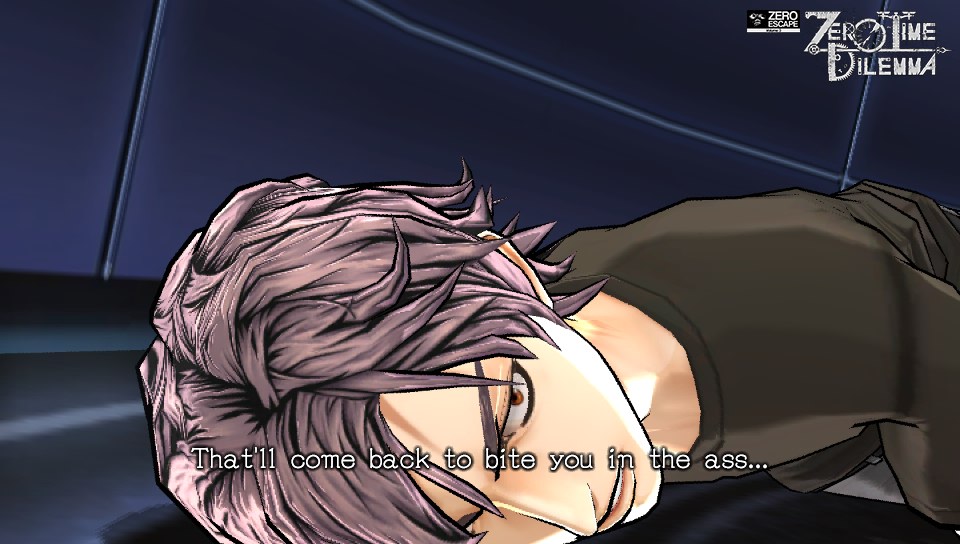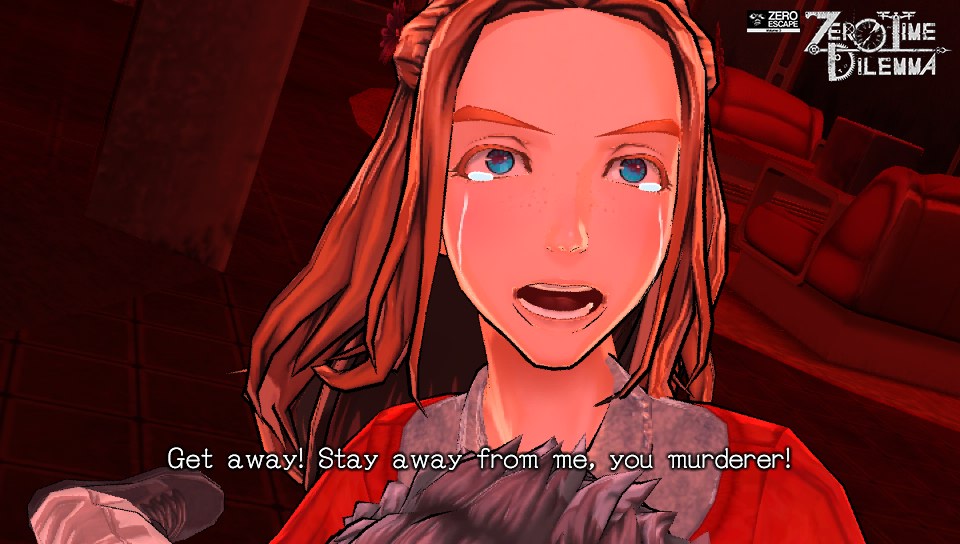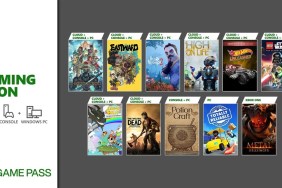Schrödinger's cat sanctuary.
For the uninitiated, the Zero Escape series is what Saw 2 could’ve been if the characters weren’t just horror movie throwaways, and Kurt Vonnegut inspired the screenplay. I am, of course, being facetious, but the game's focus on escape rooms and high-level science fiction stuffs—some pulled from whole cloth, some not—create a narrative for people who wished the aforementioned movie series was, well, not just torture porn created by a guy who once took a psychology class.
My husband gifted me the second game in the series, Virtue’s Last Reward, three years ago for the Playstation Vita, and despite its accommodations for people who haven’t played it, I followed my friends’ advice and purchased a 3DS and 999: Nine Hours, Nine Persons, Nine Doors. Although Zero Time Dilemma is similarly accommodating, the backstory is hefty enough that I recommend you try to accomplish the same. The Zero Escape series is one of my absolute favorites, heartily including this entry.
Like the previous two games, the premise is that nine random (or are they?) people have been kidnapped by an unknown figure, who calls itself Zero, and are forced to play a game where missteps and poor decisions can lead to death. In this case, they are told the only way to escape is if six of the nine participants die. Structured as a visual novel with occasional puzzle rooms, the early goals for the player are to get out and find the simple answers to very obvious quandaries: Zero’s identity, why these people were chosen, and why they’re playing the game.
However—as it is necessary to draw comparisons between this and the Zero Time games—like the previous two games, Zero Time Dilemma offers anything but simple answers to those questions, and they’re not the only ones you’ll ask over the course of playing. But this is inherently their appeal: to offer an absurdly complex but utterly engrossing story for what would otherwise be torture porn. The violence is thankfully nowhere near the most interesting feature.
This entry switches things up a bit, mostly for better, though some aspects are for worse. Here, the player is given three vectors—Carlos, Q, and Diana—to control, and each one belongs to a team of three completely separated from the other two from the start. Another new feature is how the game handles chronology. Without revealing too much, 999 compelled players to play through the entire story multiple times, changing their decisions, and VLR made this much simpler by creating an interactive flow chart.
Zero Time Dilemma also has a flow chart, but initially, it’s less useful for reasons that have to do with the story. Instead, ZTD mainly asks players to jump between “fragments,” collections of scenes that usually comprise one escape room, one major decision to branch the story’s paths, and a number of cut-scenes framing these nodes. And each team has their own set of fragments with just a handful shared among them.
As I said, there are story-related reasons why this is the method of jumping around, and until you finish a fragment, the flowchart won’t reveal when you are in relation to other events. But there are elements of its execution that do not sit well with me, especially after the ease of VLR. Namely, each team’s fragments screen is not terribly informative. Instead of names and/or descriptions, fragments are only identified by thumbnails. After playing through a few just once, it’s tough to identify which you’d like to return to without tapping on each to verify the nodes.
When new fragments are unlocked, they appear on the team’s screen with “NEW” emblazoned on the thumbnail. However, some fragments’ scenes are locked until you play other fragments, and when they are unlocked, there is, again, no simple way to tell from the team screen. Based on what you were doing, you might hazard a guess, or sometimes you can tell from checking either the Global Flowchart or the Fragment Flowchart, but it’d be nice if the main selection screen ZTD thrusts upon you were as informative or more so. It's all as needlessly complicated as it sounds.
Besides making important decisions (or not!), the main gameplay element is escaping the escape rooms. These rooms make contextual sense for their location—in this case, an underground bunker meant to simulate that very thing—and teams either find themselves locked inside them or are given good, life-threatening reasons not to leave without solving all their puzzles. The puzzles themselves are rather creative, either being standalone brainteasers or ones whose solutions involve information gathered around the room or from other puzzles. However, and I’m honestly confused about why this is, some puzzles are palette-swapped versions of others. It feels a bit lazy to end the series, one built on crafty mind-benders, on this note, though only a handful suffer this criticism. (To the series veterans, no, it isn’t a smart twist like the Q room from VLR.)
The star of Zero Time Dilemma is the story, and it doesn’t disappoint. Even if you have not played the first two games, it offers something so mind-bogglingly wild that it may compel you to go back. Seasoned players, will, of course, recognize four of the returning characters and even understand what point in the series’ timeline it’s supposed to take place. I also value that the characters are, for the most part, dressed as normally as in 999. Unlike VLR, their personalities are not initially undermined by looking like someone mined the prop room at an improv theater. Though because of their average ages—one character’s backstory notwithstanding—the lineup is as youthful, able-bodied, attractive, and uniformly colored as your typical American shock-factor horror movie.
The new team-based structure offers a refreshing twist on the previous games’ formula. Rather than enter an escape room and wonder what the heck the other teams were doing during that time, ZTD actually shows you. With a handful of well-reasoned exceptions, players will actually witness what all nine prisoners are up to for the duration of the story. This game’s unique central conceit is that each team is only given 90 minutes before they are injected with a sedative and occasionally with a drug that makes them forget that exact span of time. So a character could die, and in the follow-up fragment, their two teammates will be surprised to learn that fact. (Just to note: No matter which game you start with, expect a lot of death. This is not a spoiler.) Like many of the other conceits I know and love from the series, this one is also worth embracing.
Visuals are both better and similar to Virtue’s Last Reward, a four-year-old game. The character models now sport bold outlines, venturing into cel-shading territory, and look all the better for it. They are also, despite poor lip-syncing, more expressive than before. The protagonists will actually be performing—showing instead of telling—much of the action, creating the best scenes and understanding of space in the series. Although seeing video game characters actually do things is par for the course in most games nowadays, for a visual novel it’s really nice to see both conversations and highly emotive interactions take place in 3D space. That is, it’s nice to see a visual novel try to fit in while maintaining its core principles.
Meanwhile, the environments, can be as drab as VLR, featuring muddy and often dark textures this time around that can look a bit goofy against the characters existing within them. The UI, on the whole, is serviceable. It may be an unfair juxtaposition, but the Zero Escape games have enough personality that they’d really benefit from UI as vivid and interesting as the Persona series. Certain menus feature tiny selection boxes that make utilizing solely the Vita’s touchscreen a bit of a challenge. Exacerbating this is the new note screen. Even though it resembles that of VLR, they made the pen strokes really thick, taking up too much room to write simple characters, and there’s now a limit on ink that is largely meaningless. The challenge of the game should be the puzzles, not the elements included for convenience.
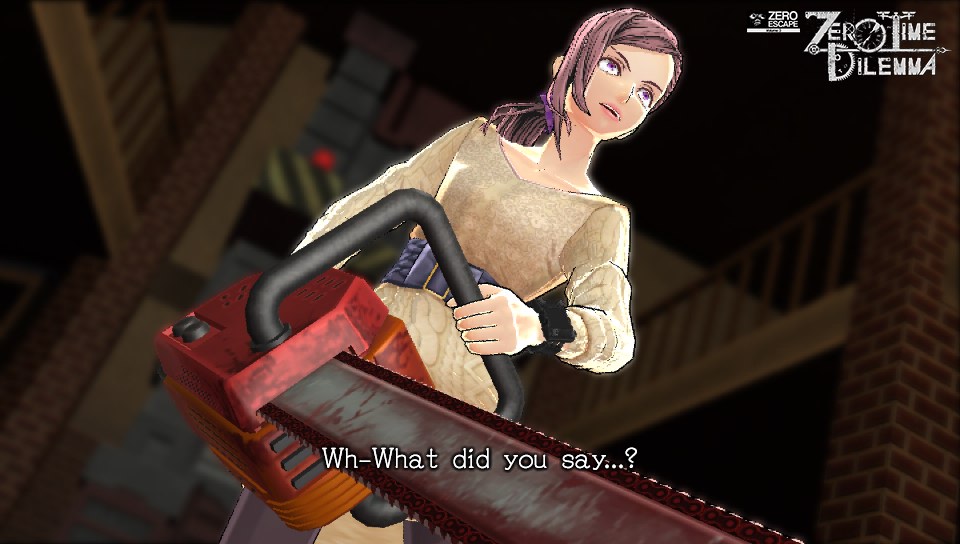
If I may make one controversial criticism, it would be about Zero Time Dilemma’s length. Now, this isn’t about value relative to game length at all. You’ll get your money’s worth in this entry. Trust me. Rather, where VLR was a vast expansion on the depth of 999’s sci-fi mastery, ZTD skips on the opportunity to perform a similar act. To witness the “true” end of 999 takes only about 12 hours at minimum and two plays through—the full gamut across six endings and all nine escape rooms takes about 20, including putzing around.
VLR upped the ante with the one true ending coming after eight major ones and 13 bad ones, 17 escape rooms, and 30 hours of investment at minimum. And there was nothing wrong with that! So I expected similar from ZTD. Instead, although there are seven major endings, the bad endings are only more numerous (27) because you’re following all three teams. But with those and only 13 escape rooms, the whole experience comes to about 21 hours or so. Maybe I’m the only fan to do so, but I wonder how deep the rabbit hole could’ve gone if they added more escape rooms, more decisions, and more branching paths. Still, I maintain that this trip is sufficiently wild, and some of the reveals offer extreme payoff for folks who’ve played all three games. Expect moments that elicit responses like “OMGHOLYFUCKJESUSWOW!” and its ilk.
And that’s that. Zero Time Dilemma is an amazing game of equivalent overall caliber to its predecessors, and its ridiculous, complicated take on scientific theories and horror thrillers is a must-witness. Despite being quite accommodating newcomers, I recommend the deep dive into the previous entries first, if anything, to be a buffer for the science-fiction you’ve yet to imbibe. Regardless, you’ll get great, well-rounded characters and a memorable trip into one of gaming’s greatest works of fiction even if you’ll scream, “Oh, come on,” as often as “Holy shitsnacks!” That’s me being at my most objective.
-
Team-based dynamic is more engrossing
-
Fragments are a creative updated to the previous games’ formulas
-
But selecting fragments can be obtuse
-
New cel-shaded character models are the most expressive in the series
-
Environments are still a bit drab
-
Puzzles are often smart
-
Some are palette-swapped repeats
-
The story is incredible and un-fucking-believable
-
Great end to the series
-
Possibly could’ve been longer or deeper
Zero Time Dilemma
-
Zero Time Dilemma #1
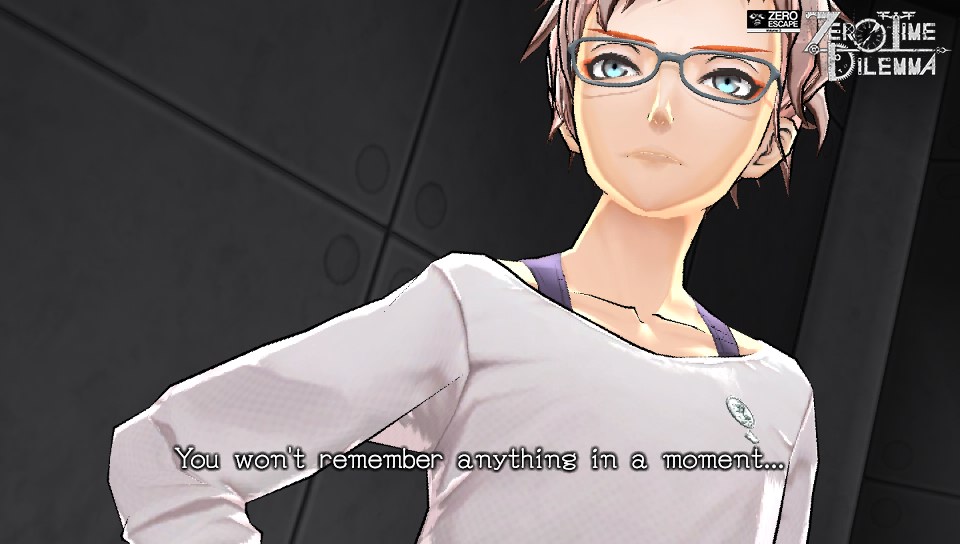
-
Zero Time Dilemma #2
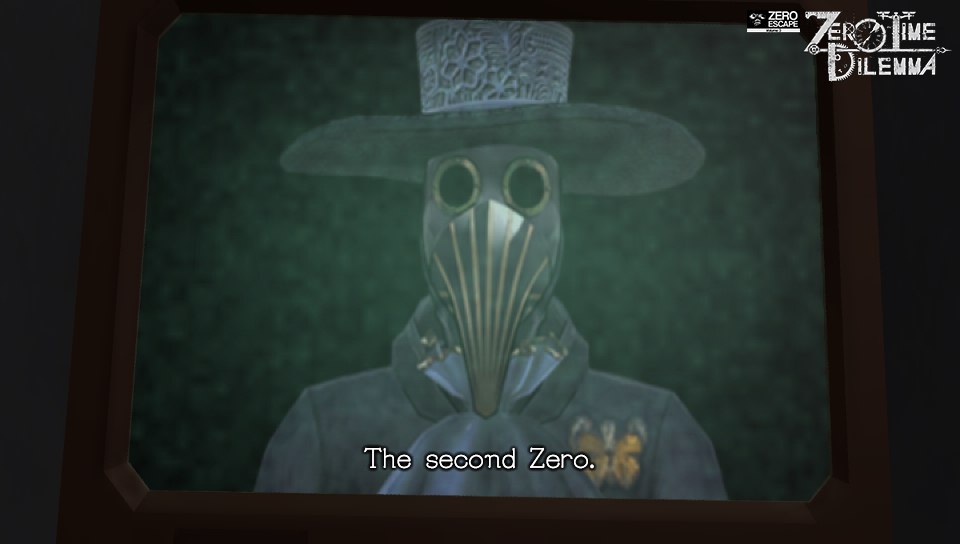
-
Zero Time Dilemma #3
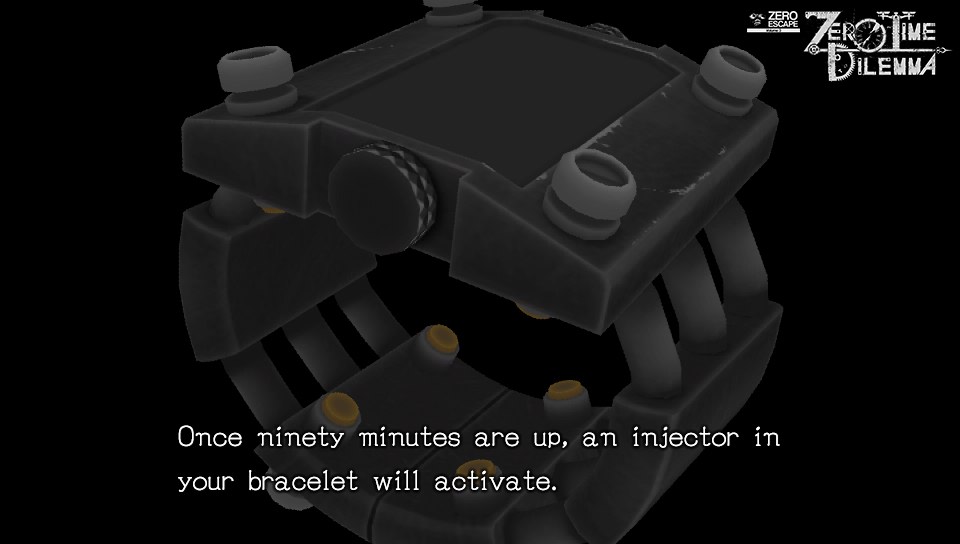
-
Zero Time Dilemma #4
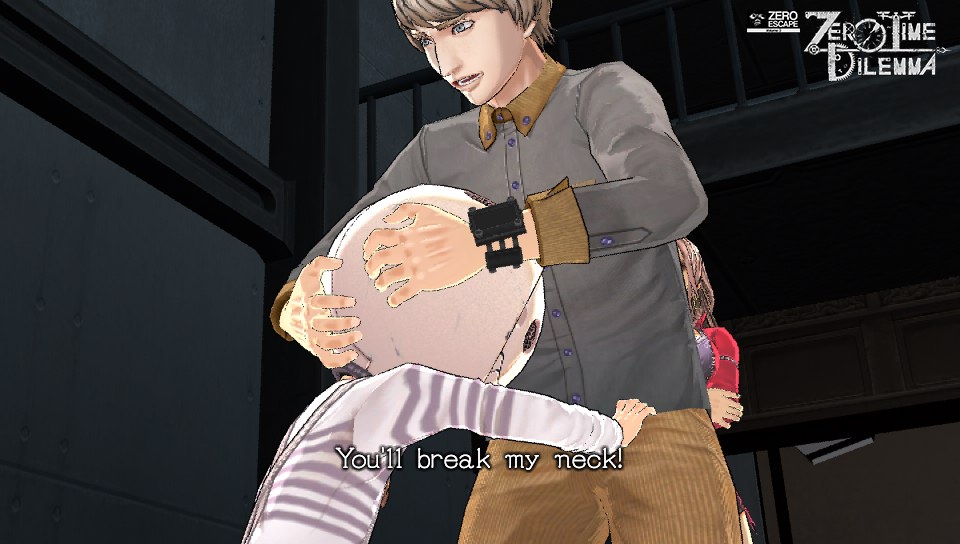
-
Zero Time Dilemma #5

-
Zero Time Dilemma #6
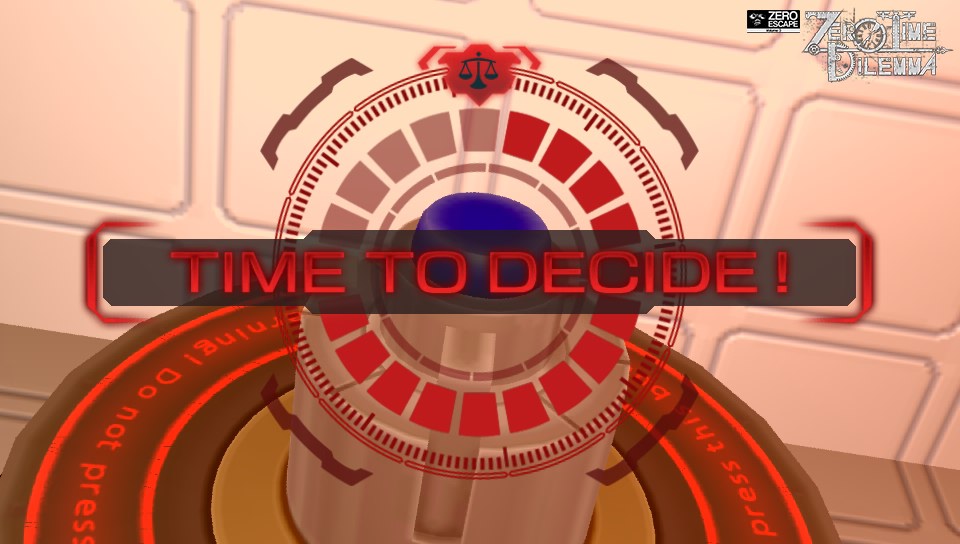
-
Zero Time Dilemma #7
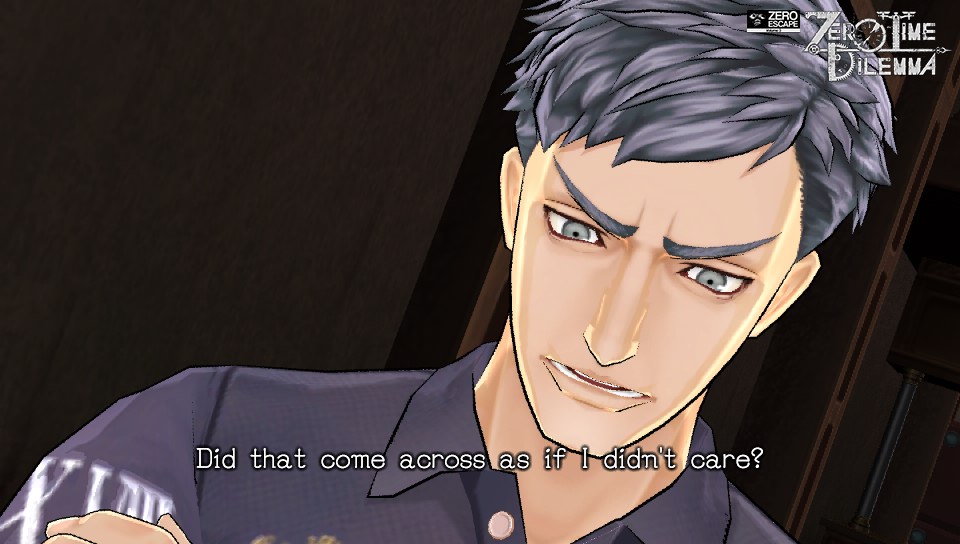
-
Zero Time Dilemma #8
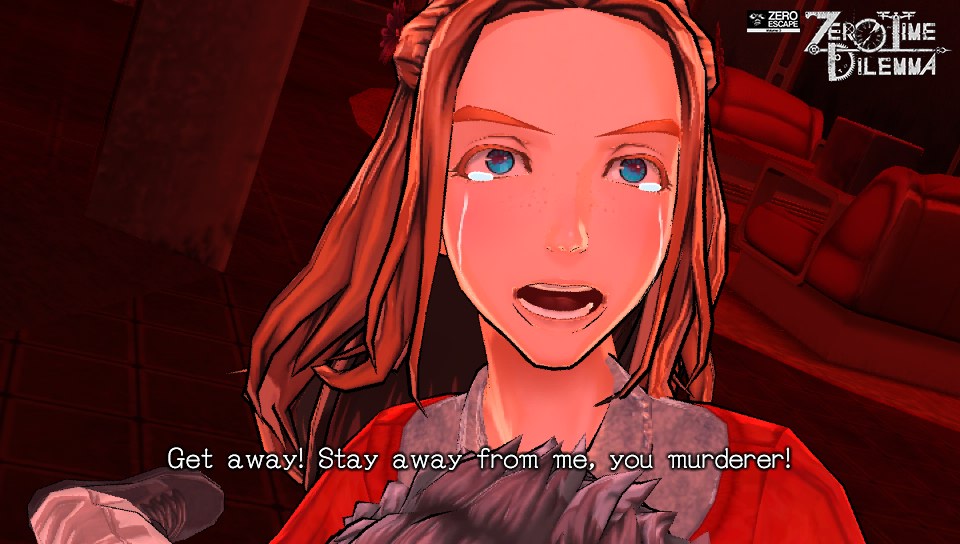
-
Zero Time Dilemma #9
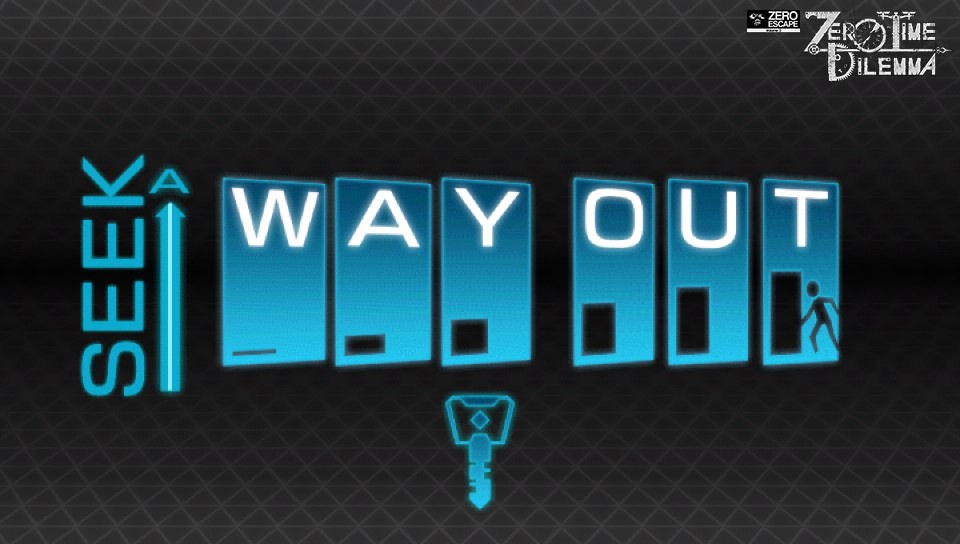
-
Zero Time Dilemma #10
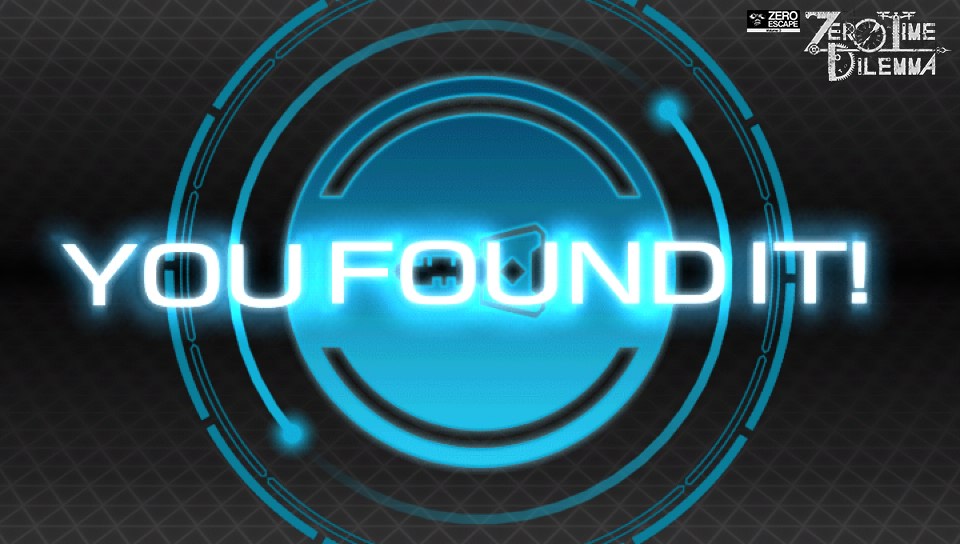
-
Zero Time Dilemma #11
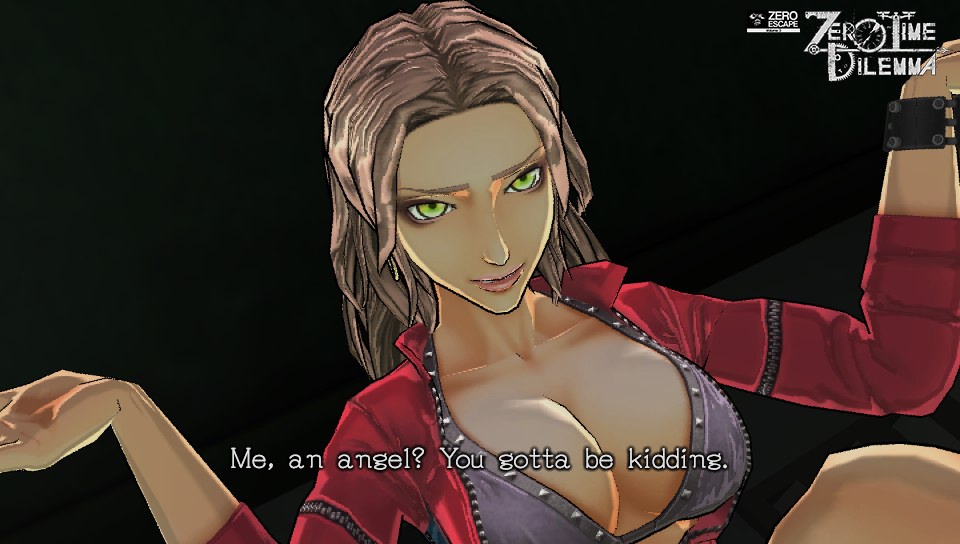
-
Zero Time Dilemma #12

-
Zero Time Dilemma #13
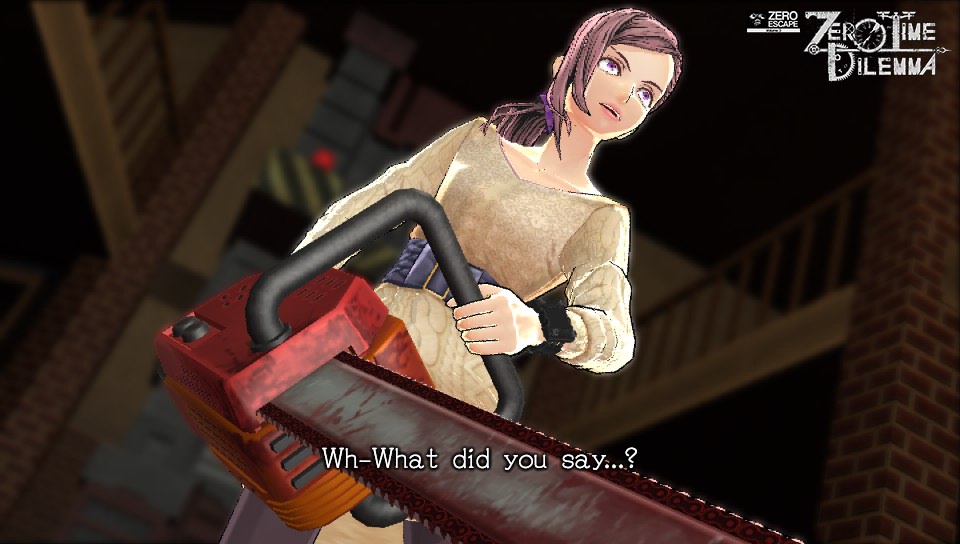
-
Zero Time Dilemma #14
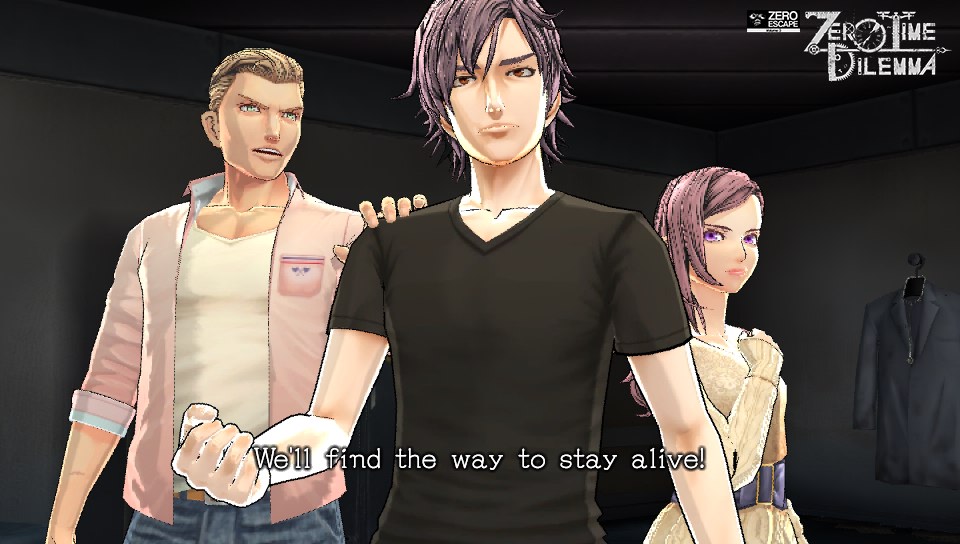
-
Zero Time Dilemma #15
